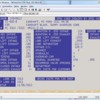I have been working to ID the Camshaft I want. I would like to get comments on this set of cam parameters.
Here's my guidelines:
My performance goals are:
425 - 450 HP
Run On Pump Gas (91 Octane)
Reliability with Little Maintenance - Hydraulic Roller Lifters
As Smooth An Idle with As High of Vacuum As I Can Get
Power Band Optomived in Lower -> Mid- RPM Range
Flat Torque Curve Across Power Band
My Engine is (will be):
351C Bored .030 Over (Sonic Tested First)
Hydraulic Roller Lifters
TRW L2348 Domed Pistons
4V Open Chamber Heads (10.5:1 CR)
Port Plates (Intake and Exhaust)
Holley 4150 Series 735 CFM
Edelbrock performer manifold
Here's the recommended cam specs I got (from a reputable vendor) to meet my goals listed above:
NOTE: These specs are so different than what is shown in the link below, I am wondering if there is some "reference difference" that I am not comprehending...
Stick #3 on Hydraulic Cams
Attachments
Original Post


